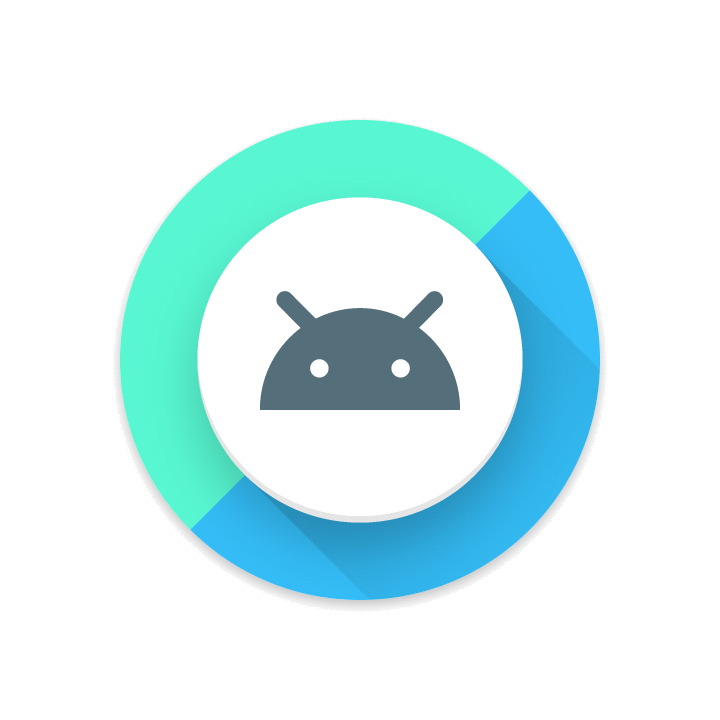 Android statues on Google campus[/caption] Android O is now in developer preview. While the actual consumer release date is still unknown, Google is letting developers toy with it in order to optimize their apps. Here’s what you need to know. Like its predecessor, Android O will continue to work on improving battery life via limiting background processes. Google has added “additional automatic limits on what apps can do in the background,” which covers three main areas: broadcasts, background services, and location data. By cleaning up how much (and what) is happening in the background, Google hopes it can solve mysterious battery drains. Notifications are also being revisited, and users will have granular control over notifications via ‘channels.’ With the next version of Android, developers must assign their apps to one or more channels. In addition to controlling the number of notifications they see, channels help prioritize notifications. If a user has ‘technology’ wide open but ‘politics’ down to a trickle, for example, they’ll get more Firebase than Trump. A new Autofill API may make it easier for users to fill in information within apps, specifically login details. Instead of pop-ups, Android O will let users decide which apps get access to the API so the ‘autofill’ happens in the background. Once an app has access to the API, it will know user data such as your name, address, phone number and passwords. While user data is a potential security nightmare for third-party developers, Google is making it boilerplate and assuming all the risk. Designers aren’t being left out, either. Android will soon have ‘adaptive icons,’ which can display differently depending on the UI being used. The system selects a mask, animates interactions with the icons, and manages them in the launcher. It adds an official dynamic to Android we’ve only been able to experience with custom ROMs or partner skins such as TouchWiz or MIUI. The icons can adapt to select shapes and sizes, and are a nice touch for those not so crazy about Android’s lean towards undefined icons. It also makes notifications easier to consume at a glance. [caption id="attachment_140563" align="aligncenter" width="720"]
Android statues on Google campus[/caption] Android O is now in developer preview. While the actual consumer release date is still unknown, Google is letting developers toy with it in order to optimize their apps. Here’s what you need to know. Like its predecessor, Android O will continue to work on improving battery life via limiting background processes. Google has added “additional automatic limits on what apps can do in the background,” which covers three main areas: broadcasts, background services, and location data. By cleaning up how much (and what) is happening in the background, Google hopes it can solve mysterious battery drains. Notifications are also being revisited, and users will have granular control over notifications via ‘channels.’ With the next version of Android, developers must assign their apps to one or more channels. In addition to controlling the number of notifications they see, channels help prioritize notifications. If a user has ‘technology’ wide open but ‘politics’ down to a trickle, for example, they’ll get more Firebase than Trump. A new Autofill API may make it easier for users to fill in information within apps, specifically login details. Instead of pop-ups, Android O will let users decide which apps get access to the API so the ‘autofill’ happens in the background. Once an app has access to the API, it will know user data such as your name, address, phone number and passwords. While user data is a potential security nightmare for third-party developers, Google is making it boilerplate and assuming all the risk. Designers aren’t being left out, either. Android will soon have ‘adaptive icons,’ which can display differently depending on the UI being used. The system selects a mask, animates interactions with the icons, and manages them in the launcher. It adds an official dynamic to Android we’ve only been able to experience with custom ROMs or partner skins such as TouchWiz or MIUI. The icons can adapt to select shapes and sizes, and are a nice touch for those not so crazy about Android’s lean towards undefined icons. It also makes notifications easier to consume at a glance. [caption id="attachment_140563" align="aligncenter" width="720"] Android O Arrives as Developer Preview
[caption id="attachment_140304" align="aligncenter" width="5445"]  Android statues on Google campus[/caption] Android O is now in developer preview. While the actual consumer release date is still unknown, Google is letting developers toy with it in order to optimize their apps. Here’s what you need to know. Like its predecessor, Android O will continue to work on improving battery life via limiting background processes. Google has added “additional automatic limits on what apps can do in the background,” which covers three main areas: broadcasts, background services, and location data. By cleaning up how much (and what) is happening in the background, Google hopes it can solve mysterious battery drains. Notifications are also being revisited, and users will have granular control over notifications via ‘channels.’ With the next version of Android, developers must assign their apps to one or more channels. In addition to controlling the number of notifications they see, channels help prioritize notifications. If a user has ‘technology’ wide open but ‘politics’ down to a trickle, for example, they’ll get more Firebase than Trump. A new Autofill API may make it easier for users to fill in information within apps, specifically login details. Instead of pop-ups, Android O will let users decide which apps get access to the API so the ‘autofill’ happens in the background. Once an app has access to the API, it will know user data such as your name, address, phone number and passwords. While user data is a potential security nightmare for third-party developers, Google is making it boilerplate and assuming all the risk. Designers aren’t being left out, either. Android will soon have ‘adaptive icons,’ which can display differently depending on the UI being used. The system selects a mask, animates interactions with the icons, and manages them in the launcher. It adds an official dynamic to Android we’ve only been able to experience with custom ROMs or partner skins such as TouchWiz or MIUI. The icons can adapt to select shapes and sizes, and are a nice touch for those not so crazy about Android’s lean towards undefined icons. It also makes notifications easier to consume at a glance. [caption id="attachment_140563" align="aligncenter" width="720"]
Android statues on Google campus[/caption] Android O is now in developer preview. While the actual consumer release date is still unknown, Google is letting developers toy with it in order to optimize their apps. Here’s what you need to know. Like its predecessor, Android O will continue to work on improving battery life via limiting background processes. Google has added “additional automatic limits on what apps can do in the background,” which covers three main areas: broadcasts, background services, and location data. By cleaning up how much (and what) is happening in the background, Google hopes it can solve mysterious battery drains. Notifications are also being revisited, and users will have granular control over notifications via ‘channels.’ With the next version of Android, developers must assign their apps to one or more channels. In addition to controlling the number of notifications they see, channels help prioritize notifications. If a user has ‘technology’ wide open but ‘politics’ down to a trickle, for example, they’ll get more Firebase than Trump. A new Autofill API may make it easier for users to fill in information within apps, specifically login details. Instead of pop-ups, Android O will let users decide which apps get access to the API so the ‘autofill’ happens in the background. Once an app has access to the API, it will know user data such as your name, address, phone number and passwords. While user data is a potential security nightmare for third-party developers, Google is making it boilerplate and assuming all the risk. Designers aren’t being left out, either. Android will soon have ‘adaptive icons,’ which can display differently depending on the UI being used. The system selects a mask, animates interactions with the icons, and manages them in the launcher. It adds an official dynamic to Android we’ve only been able to experience with custom ROMs or partner skins such as TouchWiz or MIUI. The icons can adapt to select shapes and sizes, and are a nice touch for those not so crazy about Android’s lean towards undefined icons. It also makes notifications easier to consume at a glance. [caption id="attachment_140563" align="aligncenter" width="720"]  Android icons are now shape-shifters.[/caption] Because Android now knows no boundaries with regard to devices and form-factors, Android O is adding better keyboard support. Mobile apps have made their way to Chrome OS, but users felt underwhelmed when they couldn’t navigate mobile apps in the same way as desktop ones. In version O, ‘arrow’ and ‘tab’ navigation will be officially appreciated. There is also picture-in-picture support across the platform, at least for tablets. Google didn't say if that feature would make its way across the lineup, but it will bring an app overlay feature for windowing apps and support for multiple displays. WebView is being enhanced. In Nougat, Android made WebView content an isolated process. With O (whatever its official name in the end!), a new API will let developers handle errors and crashes, a feature designed for “enhanced security and improved app stability.” URLs can also be verified through Google Safe Browsing. New Java APIs are supported in Android O, including the java.time API. Google says Android Runtime is up to two times faster on “some” benchmarks. Though hardware-dependent, version O also adds wide-gamut color support via a manifest flag for developers that lets them access AdobeRGB, Pro Photo RGB and DCI-P3, in addition to other standards. A new Audio API has been designed for devices with “high-performance, low-latency” audio needs, and fonts are now a “fully supported” resource type. Android O just came out, but there’s enough there for developers to get excited about. Some of the tooling will be applicable (possibly mandatory!) for just about everyone. We don’t know how Google plans to handle apps that don’t have a channel for notifications, or what happens to those that don’t make changes for handling background activity, but not doing so could spell trouble. A new Canary build of Android Studio (version 2.4) is also available, with features for those who want to start targeting Android O, as well as the latest SDK.
Android icons are now shape-shifters.[/caption] Because Android now knows no boundaries with regard to devices and form-factors, Android O is adding better keyboard support. Mobile apps have made their way to Chrome OS, but users felt underwhelmed when they couldn’t navigate mobile apps in the same way as desktop ones. In version O, ‘arrow’ and ‘tab’ navigation will be officially appreciated. There is also picture-in-picture support across the platform, at least for tablets. Google didn't say if that feature would make its way across the lineup, but it will bring an app overlay feature for windowing apps and support for multiple displays. WebView is being enhanced. In Nougat, Android made WebView content an isolated process. With O (whatever its official name in the end!), a new API will let developers handle errors and crashes, a feature designed for “enhanced security and improved app stability.” URLs can also be verified through Google Safe Browsing. New Java APIs are supported in Android O, including the java.time API. Google says Android Runtime is up to two times faster on “some” benchmarks. Though hardware-dependent, version O also adds wide-gamut color support via a manifest flag for developers that lets them access AdobeRGB, Pro Photo RGB and DCI-P3, in addition to other standards. A new Audio API has been designed for devices with “high-performance, low-latency” audio needs, and fonts are now a “fully supported” resource type. Android O just came out, but there’s enough there for developers to get excited about. Some of the tooling will be applicable (possibly mandatory!) for just about everyone. We don’t know how Google plans to handle apps that don’t have a channel for notifications, or what happens to those that don’t make changes for handling background activity, but not doing so could spell trouble. A new Canary build of Android Studio (version 2.4) is also available, with features for those who want to start targeting Android O, as well as the latest SDK.
 Android statues on Google campus[/caption] Android O is now in developer preview. While the actual consumer release date is still unknown, Google is letting developers toy with it in order to optimize their apps. Here’s what you need to know. Like its predecessor, Android O will continue to work on improving battery life via limiting background processes. Google has added “additional automatic limits on what apps can do in the background,” which covers three main areas: broadcasts, background services, and location data. By cleaning up how much (and what) is happening in the background, Google hopes it can solve mysterious battery drains. Notifications are also being revisited, and users will have granular control over notifications via ‘channels.’ With the next version of Android, developers must assign their apps to one or more channels. In addition to controlling the number of notifications they see, channels help prioritize notifications. If a user has ‘technology’ wide open but ‘politics’ down to a trickle, for example, they’ll get more Firebase than Trump. A new Autofill API may make it easier for users to fill in information within apps, specifically login details. Instead of pop-ups, Android O will let users decide which apps get access to the API so the ‘autofill’ happens in the background. Once an app has access to the API, it will know user data such as your name, address, phone number and passwords. While user data is a potential security nightmare for third-party developers, Google is making it boilerplate and assuming all the risk. Designers aren’t being left out, either. Android will soon have ‘adaptive icons,’ which can display differently depending on the UI being used. The system selects a mask, animates interactions with the icons, and manages them in the launcher. It adds an official dynamic to Android we’ve only been able to experience with custom ROMs or partner skins such as TouchWiz or MIUI. The icons can adapt to select shapes and sizes, and are a nice touch for those not so crazy about Android’s lean towards undefined icons. It also makes notifications easier to consume at a glance. [caption id="attachment_140563" align="aligncenter" width="720"]
Android statues on Google campus[/caption] Android O is now in developer preview. While the actual consumer release date is still unknown, Google is letting developers toy with it in order to optimize their apps. Here’s what you need to know. Like its predecessor, Android O will continue to work on improving battery life via limiting background processes. Google has added “additional automatic limits on what apps can do in the background,” which covers three main areas: broadcasts, background services, and location data. By cleaning up how much (and what) is happening in the background, Google hopes it can solve mysterious battery drains. Notifications are also being revisited, and users will have granular control over notifications via ‘channels.’ With the next version of Android, developers must assign their apps to one or more channels. In addition to controlling the number of notifications they see, channels help prioritize notifications. If a user has ‘technology’ wide open but ‘politics’ down to a trickle, for example, they’ll get more Firebase than Trump. A new Autofill API may make it easier for users to fill in information within apps, specifically login details. Instead of pop-ups, Android O will let users decide which apps get access to the API so the ‘autofill’ happens in the background. Once an app has access to the API, it will know user data such as your name, address, phone number and passwords. While user data is a potential security nightmare for third-party developers, Google is making it boilerplate and assuming all the risk. Designers aren’t being left out, either. Android will soon have ‘adaptive icons,’ which can display differently depending on the UI being used. The system selects a mask, animates interactions with the icons, and manages them in the launcher. It adds an official dynamic to Android we’ve only been able to experience with custom ROMs or partner skins such as TouchWiz or MIUI. The icons can adapt to select shapes and sizes, and are a nice touch for those not so crazy about Android’s lean towards undefined icons. It also makes notifications easier to consume at a glance. [caption id="attachment_140563" align="aligncenter" width="720"] 

